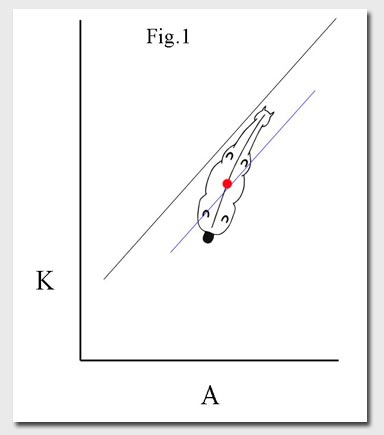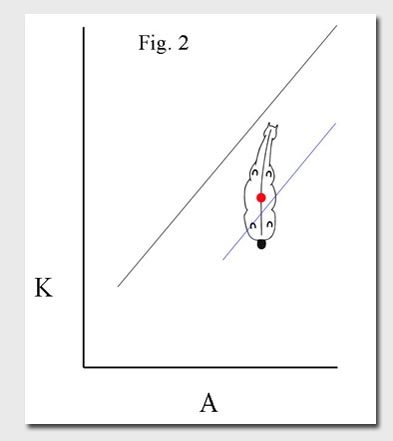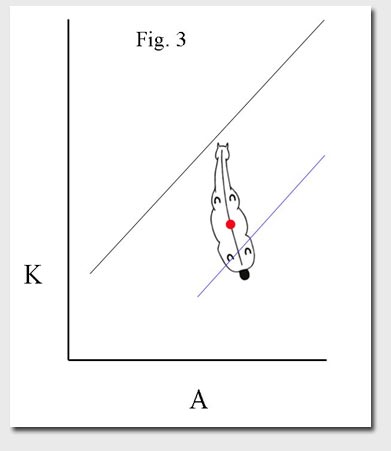Which hind leg works more through a lateral exercise is always an interesting topic. The shoulder-in, for example, is quite clear, as it will always be the inside hind leg which is carrying more weight and propelling the horse forwards along the line. The half pass though is quite an intriguing exercise. The outside leg will always be the driving leg to propel the horse through the exercise but the interesting factor comes when we talk about the angle of the horse’s body to the line the half pass is ridden at. The common thought would be that the more parallel the horse is, as actually required in competition, the more work the outside hind has to do. This is not, however, necessarily the case. In the following diagrams, which are purely for demonstration purposes:
|
|
 |
Fig.1 - Shows a more acute angled half pass with shoulders well in front. This half pass is actually exercising both hind legs and would probably be considered the most effective tool to use. This is because the primary leg, the outside hind, is stepping well towards the centre of gravity. However the inside hind is also stepping more under the mass than away from it. This is not to be confused with hind quarters trailing in the half pass which would lead to a loss of bend and engagement. |
Fig. 2 - Shows the more parallel competition half pass. Here we see the outside hind starting to step slightly away from the direction of centre of gravity. We could say that the sideways sweep of the legs will look more impressive the more parallel the horse is but at a risk of compromising the engagement of the outside hind leg. |
 |
 |
Fig. 3 - Shows the half pass with the hind quarters leading. The outside hind is now stepping well away from the centre of gravity. This will result in a loss of balance to the forehand and thus loading the shoulders, a tightening through the lateral bend and an awkwardness to the movement. |
What must be remembered is that the more the hind leg that is doing the primary work load steps away from the centre of gravity the less engagement the horse will have. Therefore, as with leg yield, the most dis-engaging scenario would be fig. 3, with quarters leading. Quite a negative effect on the drive of the horse and not a positioning that should be aimed for. The most effective and productive half pass would be fig. 1 where the engagement is maximised with the added benefit of the working of the inside hind leg.
|
|
 |